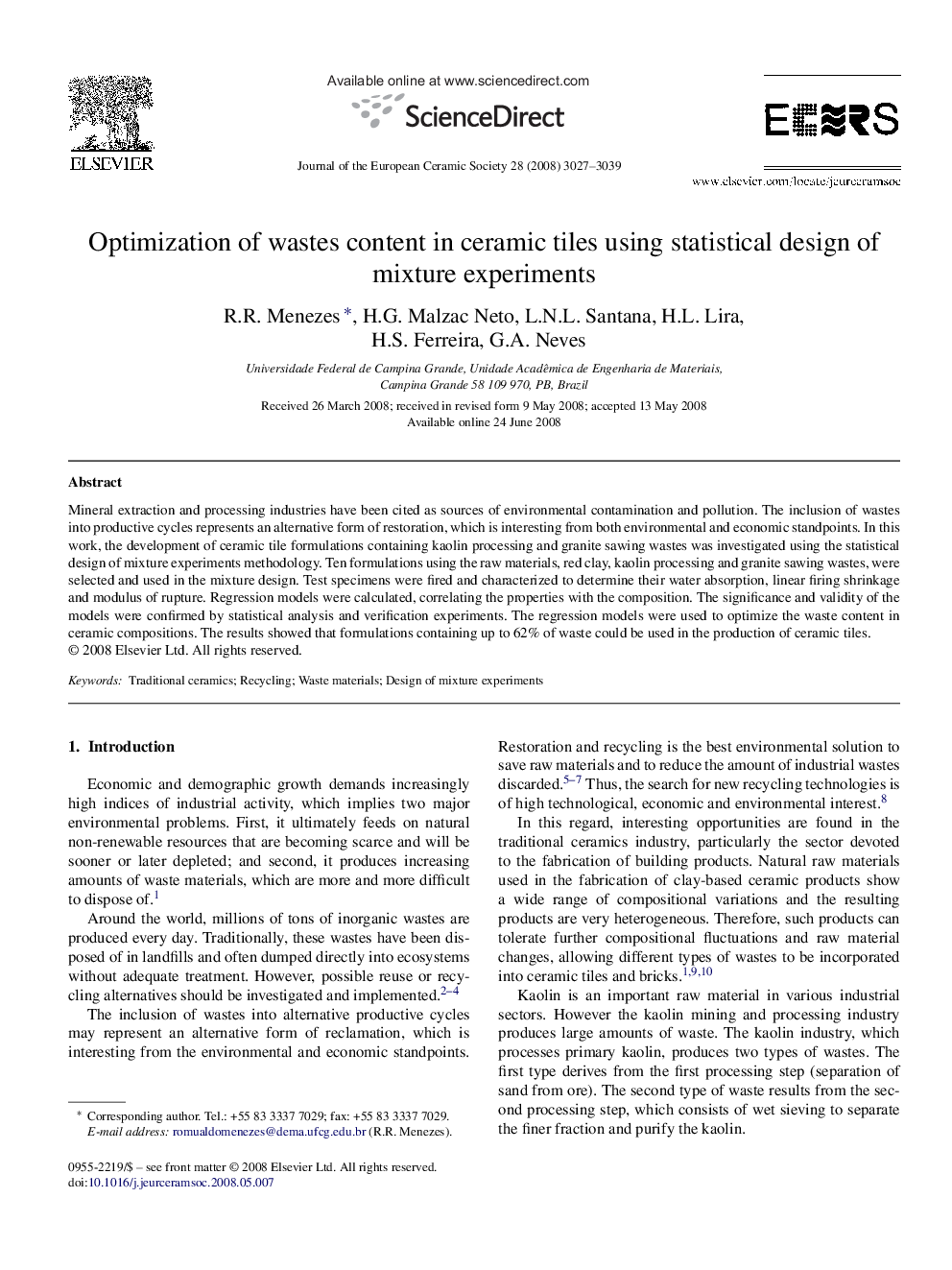| Article ID | Journal | Published Year | Pages | File Type |
|---|---|---|---|---|
| 1477498 | Journal of the European Ceramic Society | 2008 | 13 Pages |
Mineral extraction and processing industries have been cited as sources of environmental contamination and pollution. The inclusion of wastes into productive cycles represents an alternative form of restoration, which is interesting from both environmental and economic standpoints. In this work, the development of ceramic tile formulations containing kaolin processing and granite sawing wastes was investigated using the statistical design of mixture experiments methodology. Ten formulations using the raw materials, red clay, kaolin processing and granite sawing wastes, were selected and used in the mixture design. Test specimens were fired and characterized to determine their water absorption, linear firing shrinkage and modulus of rupture. Regression models were calculated, correlating the properties with the composition. The significance and validity of the models were confirmed by statistical analysis and verification experiments. The regression models were used to optimize the waste content in ceramic compositions. The results showed that formulations containing up to 62% of waste could be used in the production of ceramic tiles.
